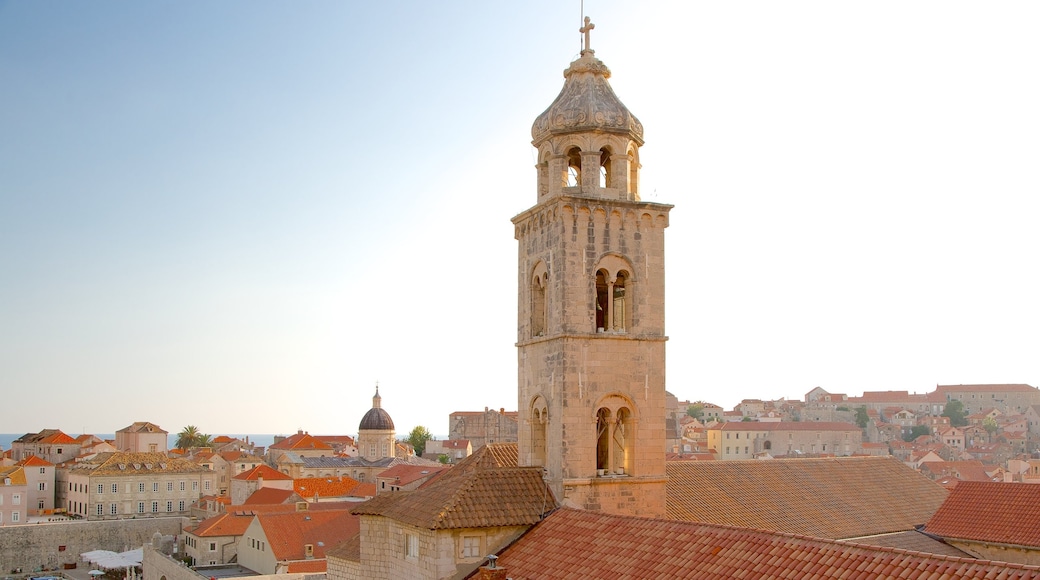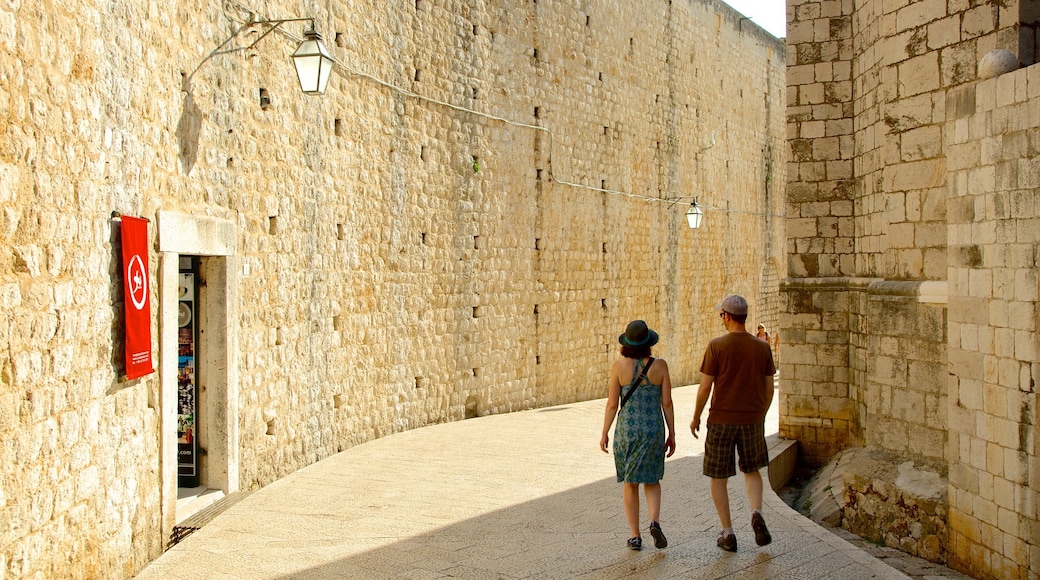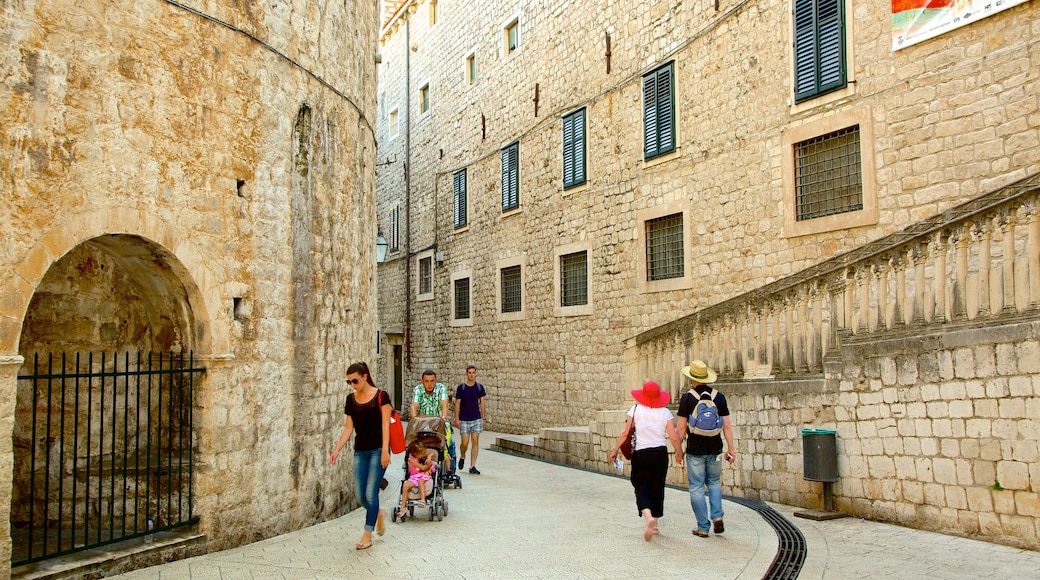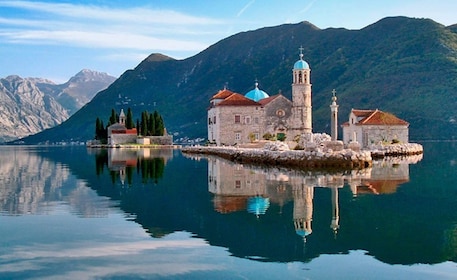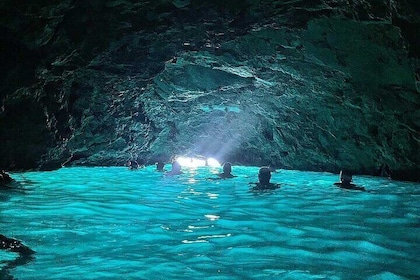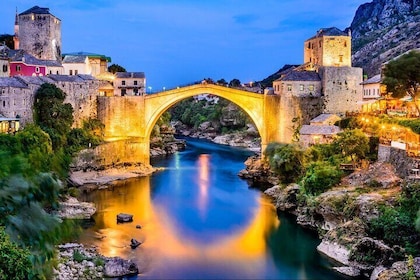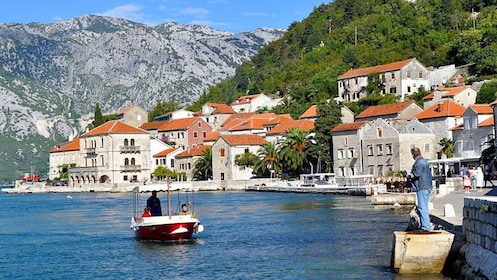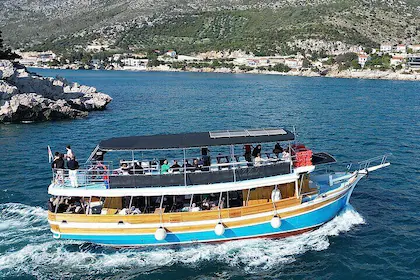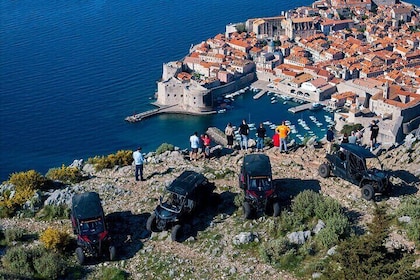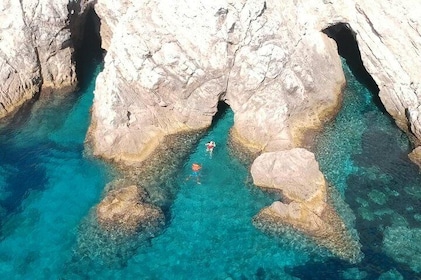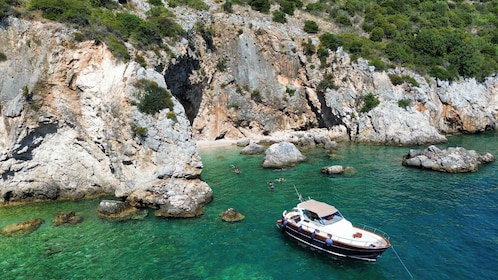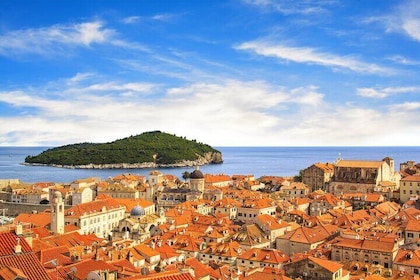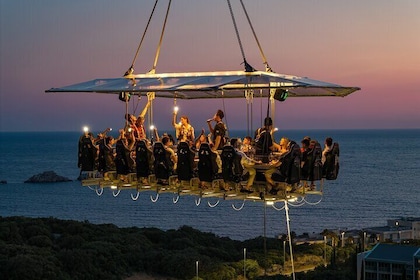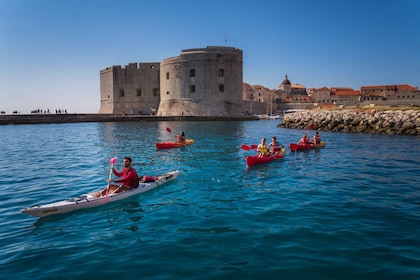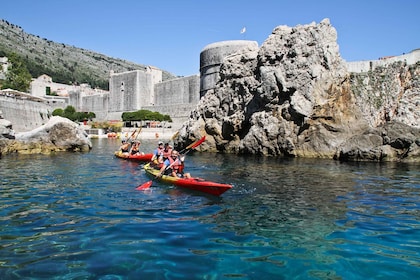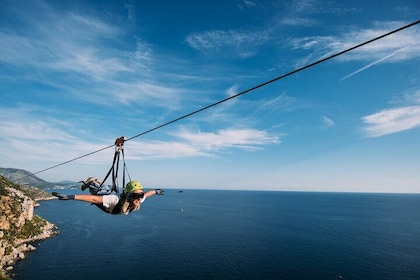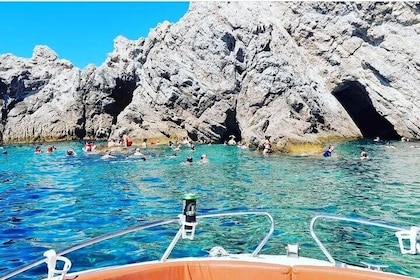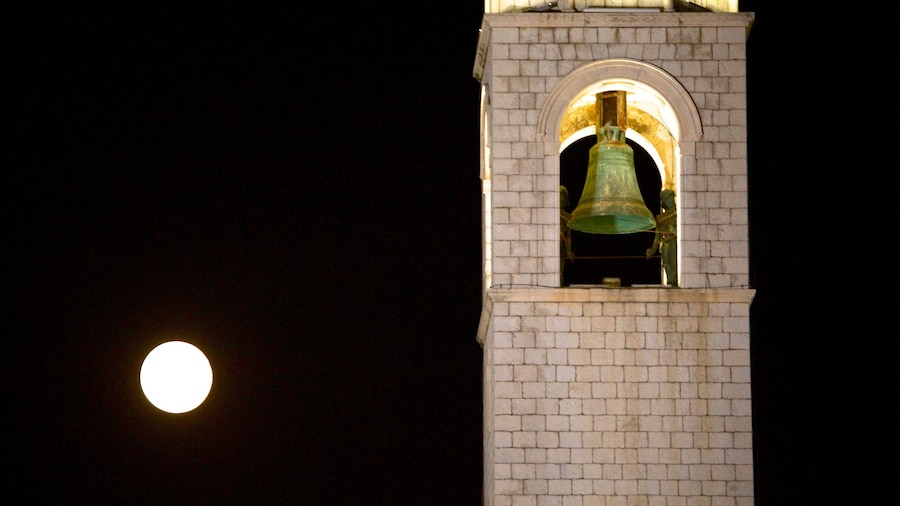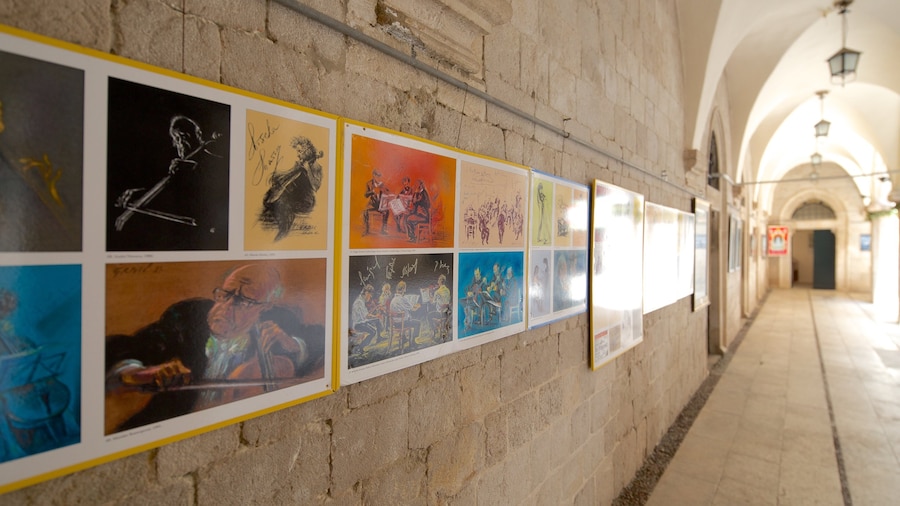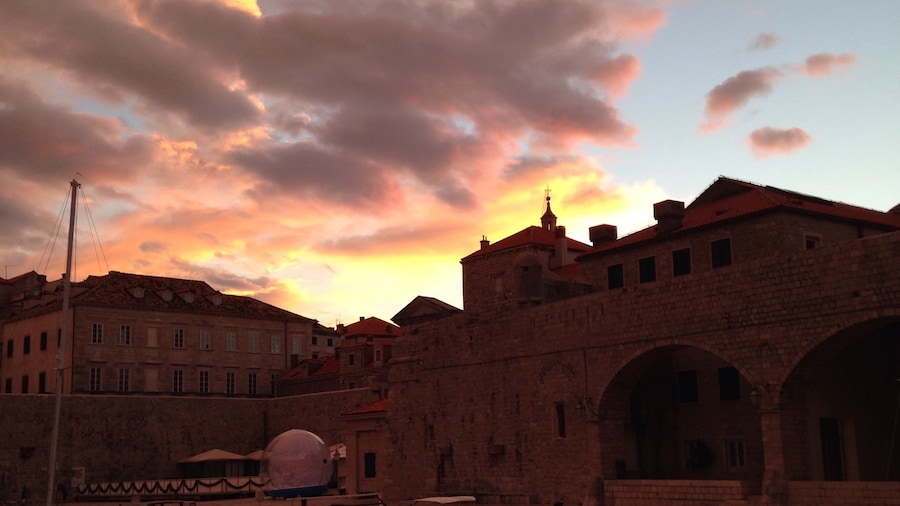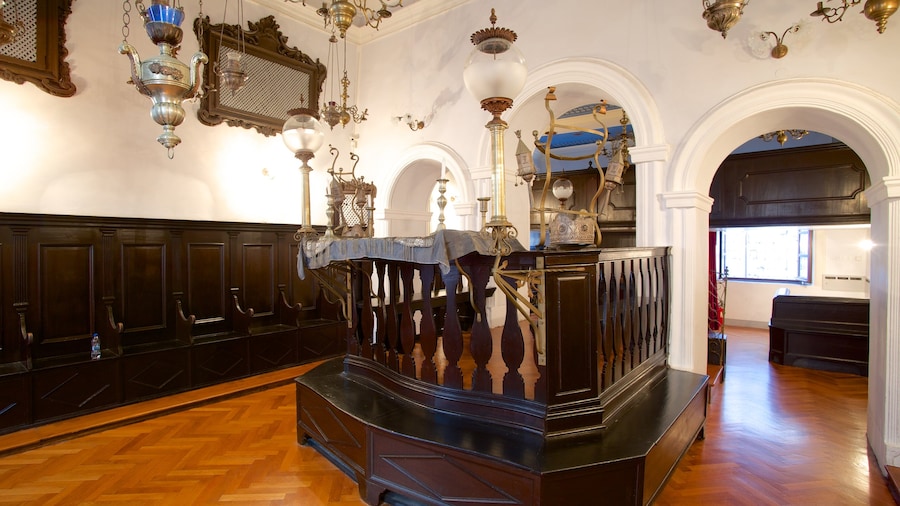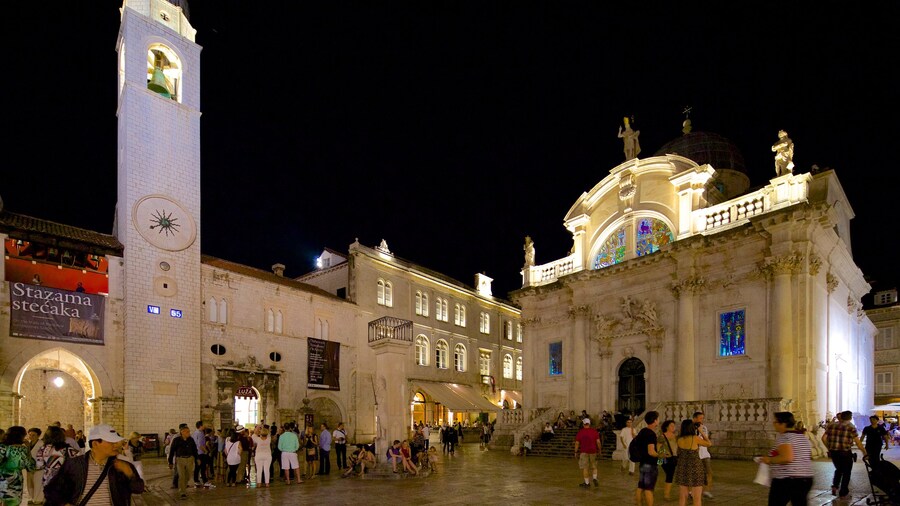Spend some time in a historic monastic complex, home to an outstanding museum of religious artwork and a well-preserved gothic cloister.
The Dominican Monastery houses a valuable collection of jewellery, 15th-century paintings and historical artifacts. It is one of the largest gothic buildings on the eastern Adriatic coast and once played an important role in the city’s defence system.
The monastery was established in the early 13th century, although construction was not completed until more than a century later. Like many of the city’s other historic buildings, it underwent extensive restoration after the Great Earthquake of 1667.
You will notice that the monastery’s exterior is relatively simple with no ornamentation. Due to its strategic location near the harbour, the structure was incorporated into the austere city walls, and therefore its design had to be understated.
Approach the monastery by taking the grand stairway that leads to its south door. Note the uneven mortaring of the balustrade’s columns, a haphazard modification by the monastery’s monks. The reason was to deter men who lingered by the staircase to catch a glimpse of women’s ankles as they ascended the stairs.
Enjoy a stroll under the porches of the 15th-century cloister that surround a garden of orange and palm trees. Look at the 14th-century well found at the centre of the garden. During the Siege of Dubrovnik in 1991, it was the sole source of clean water for almost half the city’s population.
Visit the monastery’s museum for its collection of religious art. See 15th and 16th-century canvases by painters from Dubrovnik, illustrated manuscripts and some of the earliest printed books.
Conclude your tour of the monastery with a stop at the church. Study the large, gold painted wooden crucifix that separates the sanctuary from the main body of the building. View the pulpit that is decorated with figures of the Virgin Mary and several saints. Appreciate the 20th-century pastel painting of St. Dominic by Croatian artist Vlaho Bukovac.
The Dominican Monastery is located off a passageway found between Sponza Palace and Ploče Gate. It is open daily and there is a small admission fee.
